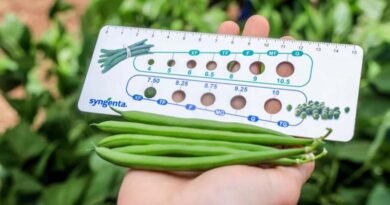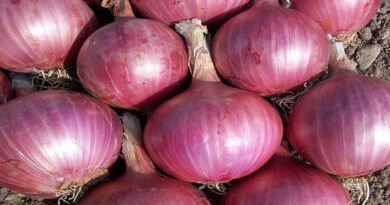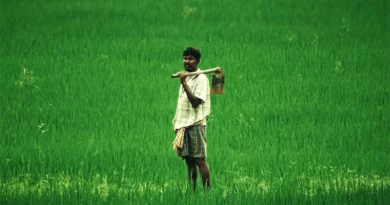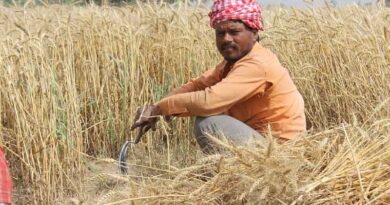Livelihood security of tribal farmers from Indian bean varieties: ‘Thar Kiran and Thar Ganga’
21 March 2024, New Delhi: The Indian bean, also known as hyacinth bean, lablab bean, country bean, Egyptian bean, Tonga bean, field bean, or sem, is a significant legume vegetable crop cultivated in tropical regions of Asia, Africa, and America. It is grown for vegetables, pulses, fodder, green manure, cover crops, medicine, and ornamental purposes. The green delicious immature pods and seeds are consumed as vegetables. Dry seeds are harvested and stored after maturity, and consumed as a pulse throughout the year. The edible pods of purple anthocyanins are a rich source of protein, amino acids, vitamins, minerals, and antioxidants. Each pod contains 86.1g moisture, 6.7g carbohydrates, 3.8g protein, 1.8g fiber, 0.9g minerals, and 0.7g fat. The pods also contain 9 mg of vitamin C, 312 IU of vitamin A, 0.06 mg of riboflavin, 0.1 mg of thiamin, and 0.7 mg of nicotinic acid. The green leaves of the Indian beans contain 21-38% of crude protein which ultimately provides nutritious and more palatable green fodder to milch animals. They produce more biomass per unit area, making them an ideal organic mulch. The Rhizobium bacteria in root nodules can withstand drought better than French beans and cowpeas. Indian beans have significant potential for sustainable agriculture and provide nutritional and income security for small and marginal farmers in dry and rainfed semi-arid regions. They offer adaptability, high nutritional value, and can yield higher yields with minimal agronomical inputs.
Thar Kiran and Thar Ganga are new high-yielding varieties developed by Dr. Gangadhara K, Dr. L. P. Yadav, Dr. V. V. Apparao, and A. K. Singh at the Central Horticultural Experiment Station in Godhra, Gujarat. These varieties were evaluated under hot rainfed semi-arid conditions and are recommended for commercial cultivation in rainfed dryland areas.
Thar Kiran is a distinctive dolichos bean variety with a striking purple pod color, high yield, and high anthocyanin content (190 mg/100g). The plant has dark green leaves and purple veins. It has purple pigmentation in its stem, petiole, flower, leaf veins, and pod. Fresh purple pods are harvested between 100-110 days after sowing, yielding 7-9 kg/plant with a potential of 55-60 t/ha. The plant is rich in anthocyanins, proteins, and antioxidants, and is resistant to Dolichos bean yellow mosaic virus disease under field conditions.
Thar Ganga is a plant with a long green pod appearance and heavy bearing capacity. It has an average pod length of 16-17.5cm and can yield 8-10 kg/plant, with a potential yield of 60t/ha. Thar Ganga is rich in proteins, vitamin C, β-carotene, and antioxidants. It is moderately resistant to Dolichos bean yellow mosaic virus disease under field conditions. Fresh pods are harvested after 98-100 days of sowing.
Thar Kiran and Thar Ganga bean varieties are known for their adaptability, high nutritional value, and low agronomical inputs, resulting in higher yields in rainfed semi-arid conditions. Tribal farmers of Panchamhal, Mahisagar, Chhota Udepur, and Dahod District of Gujarat are utilizing commercial and kitchen gardening methods for nutritional security. Thar Kiran and Thar Ganga varieties are ideal for organic and natural farming due to their adaptability to dryland and low input intake. Over 1050 farmers in Gujarat, Karnataka, Maharashtra, Telangana, Andhra Pradesh, Rajasthan, Haryana, and Uttar Pradesh have received the seeds of the two varieties. ICAR-CIAH Scientists demonstrated the commercial and kitchen gardening models of Thar Kiran and Thar Ganga varieties to the farming community.
Shri. Vishnubhai M. a tribal farmer from Gujarat has grown the varieties Thar Kiran and Thar Ganga in two acres of land (one acre each) under rainfed conditions during 2022-2023 yielding 35.0t/ha of tender pods. He sold his produce in the wholesale market at the rate of 10/kg and generated a net income of Rs. 2.80. Farmers in Gujarat are utilizing various crop varieties as a source of revenue and nutritional security. These crops are grown in kitchen gardens, providing daily protein, fiber, minerals, vitamins, and antioxidants. The leaves are also used as green and dry fodder for milch animals, providing a good source of crude protein and palatable fodder.
Also Read: FMC Launches Arc™ Farm Intelligence Platform in India
(For Latest Agriculture News & Updates, follow Krishak Jagat on Google News)















